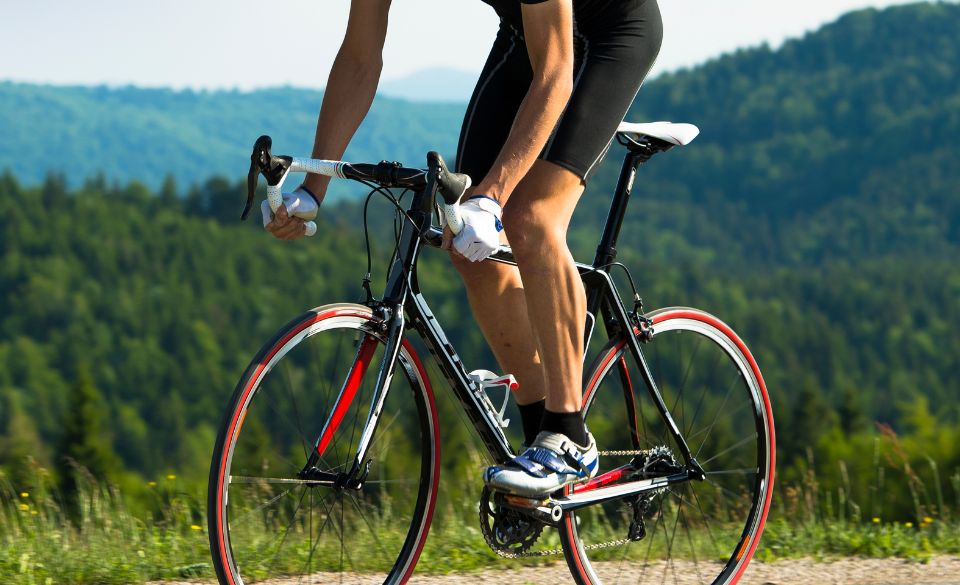
Ankling in Cycling: How to Improve Your Performance on the Bike
Page Contents
Cycling is a sport that requires not only leg strength but also efficient technique. One technique that can improve your performance on the bike is ankling. Ankling is the act of rotating your ankles during the pedaling motion. By doing so, you can maximize your power output and reduce muscle fatigue. In this article, we will discuss what ankling is, its benefits, and how to incorporate it into your cycling routine.
What is Ankling in Cycling?
Ankling in cycling is a technique where the cyclist rotates their ankles during the pedal stroke. This means that as the cyclist pushes the pedals down, they point their toes downward, and as they bring the pedals up, they flex their ankles and bring their toes upward. By incorporating ankling into their cycling technique, cyclists can engage more muscles in their lower legs and optimize their pedaling efficiency. This technique can help generate more power with each pedal stroke and reduce muscle fatigue, making it an effective tool for improving cycling performance. Additionally, ankling can help distribute the workload across more muscle groups, thereby avoiding overworking any one area and preventing premature fatigue. To successfully incorporate ankling into their cycling routine, cyclists should start slowly and gradually increase the intensity of their training. They may also consider working with a trainer or coach to refine their technique and ensure that they are using ankling in the most effective way possible.
Benefits of Ankling in Cycling
Ankling in cycling has been shown to provide numerous benefits for cyclists. One of the main benefits is an increase in power output. In a study published in the Journal of Sports Science and Medicine, researchers found that ankling produced a significant increase in power output during the pedal stroke. This is because ankling engages more muscles in the lower leg, allowing for a greater force to be applied to the pedals.
In addition to an increase in power output, ankling can also improve pedaling efficiency. A study published in the International Journal of Sports Medicine found that ankling increased the overall efficiency of the pedal stroke. By engaging more muscles and optimizing the pedaling technique, cyclists can reduce wasted energy and maximize their output.
Ankling can also help reduce muscle fatigue. A study published in the European Journal of Applied Physiology found that ankling helped distribute the workload across more muscle groups, thereby avoiding overworking any one area and preventing premature fatigue. By reducing muscle fatigue, cyclists can maintain their power output for longer periods of time.
Overall, the benefits of ankling in cycling include increased power output, improved pedaling efficiency, and reduced muscle fatigue. By incorporating this technique into their cycling routine, cyclists can improve their performance and achieve their goals. It is important to note that ankling is a technique that requires practice and patience to master. Cyclists should start slowly and gradually build up their use of ankling over time to avoid injury and achieve the best results.
How to Incorporate Ankling into Your Cycling Routine
Incorporating ankling into your cycling routine can help improve your performance on the bike. However, it is important to do it correctly to avoid injury and reap the benefits. Here are some tips on how to incorporate ankling into your cycling routine.
1. Start Slow: Begin by incorporating ankling into your cycling routine slowly. Start with shorter rides and focus on getting the technique right before increasing the intensity of your workouts.
2. Focus on Technique: To properly incorporate ankling, focus on the technique first. It is important to point your toes down on the downstroke and flex your ankle on the upstroke. This technique engages more muscles in the lower leg, providing more power output and reducing muscle fatigue.
3. Gradually Increase Intensity: Once you have mastered the technique, gradually increase the intensity of your workouts. This will allow you to build up your strength and endurance over time.
4. Work with a Coach: Working with a coach or trainer can help you refine your technique and ensure that you are using ankling in the most effective way possible. A coach can also provide guidance on how to safely incorporate ankling into your cycling routine.
5. Monitor Progress: Keep track of your progress over time to see how incorporating ankling into your cycling routine is benefiting you. This will also help you adjust your training plan as needed.
Final Words
Incorporating ankling into your cycling routine can have numerous benefits, including increased power output, improved pedaling efficiency, and reduced muscle fatigue. As with any technique, it is important to start slowly and focus on proper technique to avoid injury and achieve the best results. Gradually increasing the intensity of your workouts and working with a coach or trainer can also help you incorporate ankling effectively. Studies have shown that ankling can improve power output and pedaling efficiency, making it a valuable technique for cyclists looking to improve their performance on the bike. By incorporating ankling into your cycling routine, you can take your cycling to the next level.
References:
1. Sanderson DJ, Blackwell GJ, Grant SF. Effect of ankle and toe movement on cycling power. J Sports Sci Med. 2005;4(3):222-230.
2. Candotti CT, Loss JF, Carpes FP. Effects of ankling on cycling efficiency in individuals with different skill levels. Int J Sports Med. 2012;33(11):895-899. doi:10.1055/s-0032-1311654.



